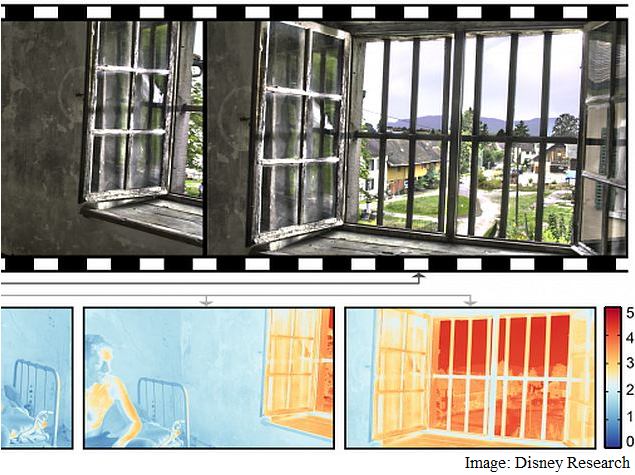- Home
- Cameras
- Cameras News
- Disney's Local Tone Mapping Technique Gives HDR Video Finer Detail
Disney's Local Tone Mapping Technique Gives HDR Video Finer Detail

A new image processing technique developed by Disney Research could make high dynamic range (HDR) video look better when show on consumer-quality displays.
The technique works by preserving much of the rich visual detail while eliminating 'ghosting' and other unwanted visual artefacts.
The combination of HDR acquisition and the new technique enables video effects such as showing the detail of an actor's face even as lighting shifts from shadow to direct sunlight and back to shadow.
HDR is a means of capturing images with a greater range of lighting and contrast - from dark shadows to bright sunlight - than is possible with standard photography and that is closer to how people perceive natural scenes.
But HDR currently outstrips the dynamic range that most televisions and video monitors can display, so HDR video must go through a process called tone mapping to adapt those images to the limitations of displays.
A number of such techniques, or tone mapping operators (TMO), exist, noted Tunc Aydin, an Associate Research Scientist at Disney Research Zurich. But though they reduce the dynamic range of the video, they either lose some of the visual details or they introduce unwanted effects, such as brightness flickering, or amplify camera noise to create ghosting.
The local tone mapping method developed by Aydin and his colleagues at Disney Research uses an approach taken with many TMOs - decomposing the signal into a base and a detail layer. In that way, the dynamic range of the base layer can be reduced while preserving a great amount of detail and fine scale contrast.
The main difference that the Disney team introduced is using a temporal filter on the detail layer and a spatiotemporal filter on the base layer. They also developed a simple interface that enables a user to perform tone mapping interactively once the base and detail layers have been pre-computed.
Researchers found that the technique was capable of tone mapping video sequences with complex motion and lighting changes and was worked particularly well in low-light situations where camera noise was high.
Get your daily dose of tech news, reviews, and insights, in under 80 characters on Gadgets 360 Turbo. Connect with fellow tech lovers on our Forum. Follow us on X, Facebook, WhatsApp, Threads and Google News for instant updates. Catch all the action on our YouTube channel.
Related Stories
- Samsung Galaxy Unpacked 2025
- ChatGPT
- Redmi Note 14 Pro+
- iPhone 16
- Apple Vision Pro
- Oneplus 12
- OnePlus Nord CE 3 Lite 5G
- iPhone 13
- Xiaomi 14 Pro
- Oppo Find N3
- Tecno Spark Go (2023)
- Realme V30
- Best Phones Under 25000
- Samsung Galaxy S24 Series
- Cryptocurrency
- iQoo 12
- Samsung Galaxy S24 Ultra
- Giottus
- Samsung Galaxy Z Flip 5
- Apple 'Scary Fast'
- Housefull 5
- GoPro Hero 12 Black Review
- Invincible Season 2
- JioGlass
- HD Ready TV
- Laptop Under 50000
- Smartwatch Under 10000
- Latest Mobile Phones
- Compare Phones
- Redmi Note 15 5G
- Redmi Note 15 Pro 5G
- Redmi Note 15 Pro+ 5G
- Lava Play Max
- Poco C85 5G
- Honor Magic 8 Lite
- Jolla Phone
- Realme P4x 5G
- Asus ProArt P16
- MacBook Pro 14-inch (M5, 2025)
- OnePlus Pad Go 2
- Poco Pad M1
- Just Corseca Skywatch Pro
- Honor Watch X5
- Acerpure Nitro Z Series 100-inch QLED TV
- Samsung 43 Inch LED Ultra HD (4K) Smart TV (UA43UE81AFULXL)
- Asus ROG Ally
- Nintendo Switch Lite
- Haier 1.6 Ton 5 Star Inverter Split AC (HSU19G-MZAID5BN-INV)
- Haier 1.6 Ton 5 Star Inverter Split AC (HSU19G-MZAIM5BN-INV)

















